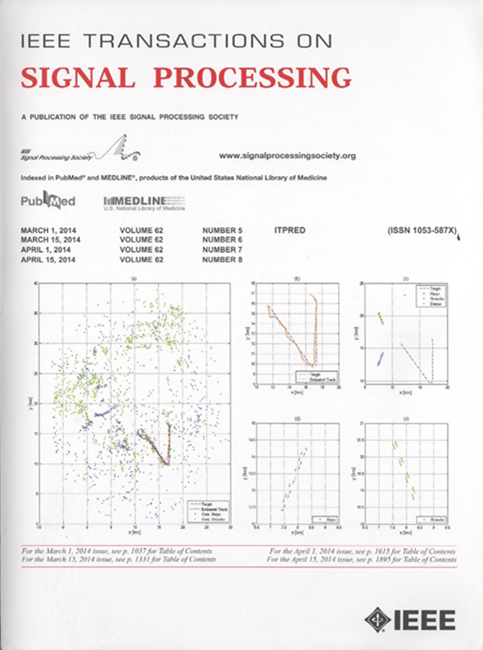A Low-Complexity Chinese Remainder Theorem Based Multi-Carrier Delay Estimation Approach
IF 4.6
2区 工程技术
Q1 ENGINEERING, ELECTRICAL & ELECTRONIC
引用次数: 0
Abstract
With the rapid development of cluster systems, such as unmanned aerial vehicle (UAV) networks and satellite constellations, multi-node collaboration has emerged as a critical requirement. Accurate time synchronization, a cornerstone of such collaborative systems, heavily relies on high-precision delay estimation. Traditional multi-carrier delay estimation methods face an inherent trade-off between estimation accuracy and unambiguous range. While the Chinese Remainder Theorem (CRT)-based approach resolves this dilemma by enabling high-precision estimation without sacrificing range, its computational complexity remains prohibitively high for practical implementations. To address this challenge, we propose a novel low-complexity CRT algorithm based on remainder reconstruction (RR-CRT). By introducing an auxiliary phase to reconstruct erroneous remainders, our method reduces the computational complexity from基于中国剩余定理的低复杂度多载波时延估计方法
随着无人机(UAV)网络和卫星星座等集群系统的快速发展,多节点协作已成为一个关键要求。精确的时间同步是这种协同系统的基石,在很大程度上依赖于高精度的延迟估计。传统的多载波时延估计方法面临着估计精度和无二义范围之间的权衡。虽然基于中国剩余定理(CRT)的方法通过在不牺牲范围的情况下实现高精度估计来解决这一难题,但其计算复杂性对于实际实现来说仍然过高。为了解决这一挑战,我们提出了一种基于剩余重构的低复杂度CRT算法(RR-CRT)。通过引入辅助相位来重建错误余数,我们的方法将计算复杂度从$O(K^{2})$降低到$O(K)$,其中K表示子载波的数量。至关重要的是,这种复杂性的降低只会轻微影响算法的性能,包括相位误差容忍范围、正确解决相位模糊的概率和延迟估计的均方根误差(RMSE)。数值仿真验证了该算法的有效性和鲁棒性,证明了该算法在平衡计算效率和估计性能方面的优越性。
本文章由计算机程序翻译,如有差异,请以英文原文为准。
求助全文
约1分钟内获得全文
求助全文
来源期刊

IEEE Transactions on Signal Processing
工程技术-工程:电子与电气
CiteScore
11.20
自引率
9.30%
发文量
310
审稿时长
3.0 months
期刊介绍:
The IEEE Transactions on Signal Processing covers novel theory, algorithms, performance analyses and applications of techniques for the processing, understanding, learning, retrieval, mining, and extraction of information from signals. The term “signal” includes, among others, audio, video, speech, image, communication, geophysical, sonar, radar, medical and musical signals. Examples of topics of interest include, but are not limited to, information processing and the theory and application of filtering, coding, transmitting, estimating, detecting, analyzing, recognizing, synthesizing, recording, and reproducing signals.
 求助内容:
求助内容: 应助结果提醒方式:
应助结果提醒方式:


